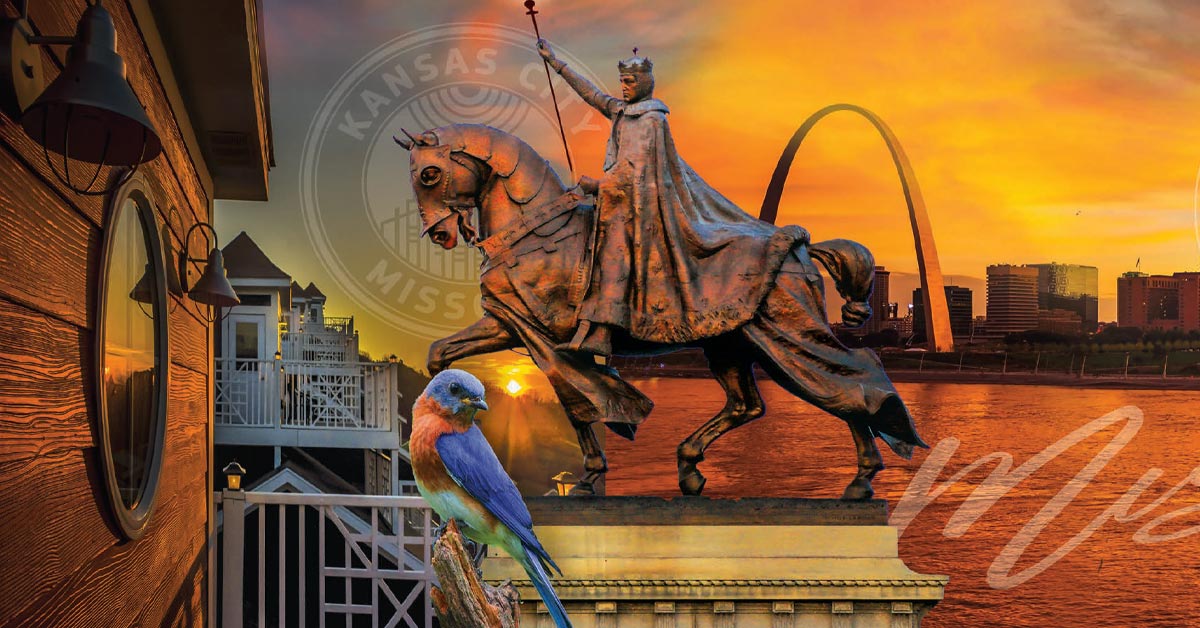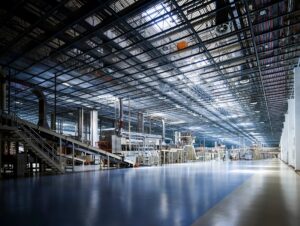Typical of the Midwest region, Missouri’s population has seen flat population growth over the past several decades, ranking 18th among states as of 2017 with a population of 6.1 million, according to the Missouri Economic Research and Information Center (MERIC).
U.S. News & World Report ranked Missouri at No. 30 in its 2018 Best States rankings, but the Show-Me State scored relatively high for opportunity and fiscal stability. Missouri’s economy remains diverse and the state’s unemployment rate is below the national average.
Most of Missouri’s Fortune 500 companies are based in the St. Louis metro area, with the largest being pharmacy benefit-management company Express Scripts and managed-care provider Centene. Other major companies headquartered in Missouri include industrial manufacturer Emerson Electric, agrochemical company Monsanto and Springfield-based O’Reilly Auto Parts.
The Show-Me State is home to nearly 100,000 farms covering two-thirds of the state’s acreage, according to the Missouri Department of Agriculture. Missouri ranked No. 6 among states as of 2016 in soybean production. Some of the state’s other top commodities include corn, cattle, hogs and broilers (chicken).
Missouri’s gross domestic product (GDP) totaled more than $304.8 billion in 2017, with the two largest economies located in its two major metro areas, St. Louis and Kansas City, respectively, according to the U.S. Bureau of Economic Analysis. The manufacturing industry represented 13.2 percent of Missouri’s GDP that year.
Kansas City is home to a Ford assembly plant that makes F-150 pickups and commercial vans, as well as a 4.9-million-square-foot General Motors facility that builds Cadillac XT4s and Chevrolet Malibus. St. Louis has seen a downtown revival, but the city may still be best known for its breweries, led by Budweiser maker Anheuser-Busch, whose iconic brewery on 12th and Lynch streets remains a popular tourist destination.
In the three-year period that ended in 2017, however, the state’s fastest-growing local economies were in Springfield (in southwest Missouri) and Columbia, which is home to the University of Missouri and several colleges, MERIC reported. Both markets grew their GDPs by 7.2 percent during that time frame.
St. Louis office market
Average asking rents for office space in the St. Louis metro area rose 6.8 percent year over year in first-quarter 2019 to $20.02 per square foot, Cushman & Wakefield reported. The vacancy rate over the same period rose 1 percentage point, but it still remained at a historically tight 12.4 percent, the company reported.
For only the third time in five years, the St. Louis office market saw quarterly negative net absorption in the past first quarter, according to Cushman & Wakefield. Some 280,000 square feet of negative absorption was largely due to Scottrade’s acquisition of TD Ameritrade in 2017, as the company vacated roughly half of its space in St. Louis.
The only significant office building delivered in 2018 was a 180,000- square-foot property anchored by Aon, Microsoft and the Cambridge Innovation Center, Colliers International reported. But the 1.2 million square feet of office space under construction as of fourth-quarter 2018 was a 15-year high, according to Colliers.
Focus: Aerospace
The Show-Me State has ties to the aerospace industry going back to Charles Lindbergh’s solo transatlantic flight in the Spirit of St. Louis, which was largely financed by St. Louis investors.
Today, Missouri is an important aerospace and defense industry hub centered around Boeing’s plant in north St. Louis County. According to the Missouri partnership, more than 14,000 workers produce F/A-18, EA-18, F-15 and T-X fighter jets at Boeing’s Defense, Space and Security facilities. As of fourth-quarter 2017, Boeing ranked No. 6 among the state’s largest private-sector employers, MERIC reported.
Last year, Boeing was awarded a contract worth up to $9.2 billion to build new training jets for the U.S. Air Force. The contract was expected to secure the future of Boeing’s St. Louis manufacturing plants and the thousands of jobs they support for more than a decade, the St. Louis Post-Dispatch reported.
Unemployment
Missouri’s unemployment rate has ticked up marginally after hitting a post-recession era low of 3 percent in July 2018. As of this past March, unemployment stood at 3.3 percent, half a percentage point lower than the U.S. average.
As of 2017, Missouri’s median annual household income ranked No. 36 among states, according to the Henry J. Kaiser Family Foundation. Missouri had a median annual income of $53,578 in 2017, which trailed the national average of $60,336, according to U.S. Census Bureau data. As of the same year, about 4 percent of households in Missouri were considered “high income,” with earnings of more than $200,000 annually, according to statistics from Cubit Planning Inc.
What the locals say
“The downtown St. Louis area, which hasn’t seen much activity over the last decade, has really picked up over the last two or three years with the redevelopment of the St. Louis Armory and Ballpark Village. A lot of new hotels are going into downtown. Union Station has seen a huge turnaround with the development of the aquarium, which is supposed to open this year. There is the addition of a Ferris wheel next to it. Most recently, MLS announced that St. Louis is most likely going to get a Major League Soccer franchise. The stadium plans, which look fantastic, were released in April [2019] and that will be right next to the Union Station redevelopment.”
Carl Day Jr.
President, St. Louis Realtors commercial division
3 Cities to Watch
St. Louis
Founded in 1764 along the Mississippi River by French fur traders, St. Louis quickly grew into a major port city. Today, the city’s metro area has an estimated population of 2.85 million, although the city itself has been consistently losing people to the suburbs, and now has about 308,000 residents, its lowest population in the past century. A 2018 Brookings Institution study of 70 older industrial cities ranked the St. Louis economy as one of the stronger ones since 2000, noting its diversified economy and worker-talent pool.
Kansas City
Kansas City lies on Missouri’s western edge, bordered by Kansas. With a city population of nearly 500,000 and 2.3 million metro-area residents located near the geographic center of the country, Kansas City is the home base for several corporations, including Hallmark Cards, H&R Block and the GPS-technology company Garmin. The Livestock Exchange Building, the former headquarters for the Kansas City Stockyards where millions of cattle, hogs and sheep were once auctioned, is now home to numerous shops, restaurants and office spaces in the West Bottoms area west of downtown.
Hannibal
A Mississippi River town that flourished in the 19th century as a port for steamboats, Hannibal is best known as the boyhood home of Mark Twain, whose characters in “The Adventures of Tom Sawyer” and “The Adventures of Huckleberry Finn” were drawn from many of the people Twain knew in Hannibal. Home to about 17,000 people and several major companies, including General Mills, Hannibal has a thriving arts community with several galleries featuring local painters and potters.
Sources: Brookings Institution, City of Hannibal, Colliers International, Cubit Planning Inc., Cushman & Wakefield, Ford, Fortune, Henry J. Kaiser Family Foundation, Missouri Department of Agriculture, Missouri Economic Research and Information Center, St. Louis Post-Dispatch, St. Louis Public Radio, U.S. Bureau of Economic Analysis, U.S. Census Bureau, U.S. Department of Labor, U.S. News & World Report, World Population Review
Author
-

Victor Whitman is a contributing writer for Scotsman Guide and a former editor of the publication’s commercial magazine.
View all posts




















































